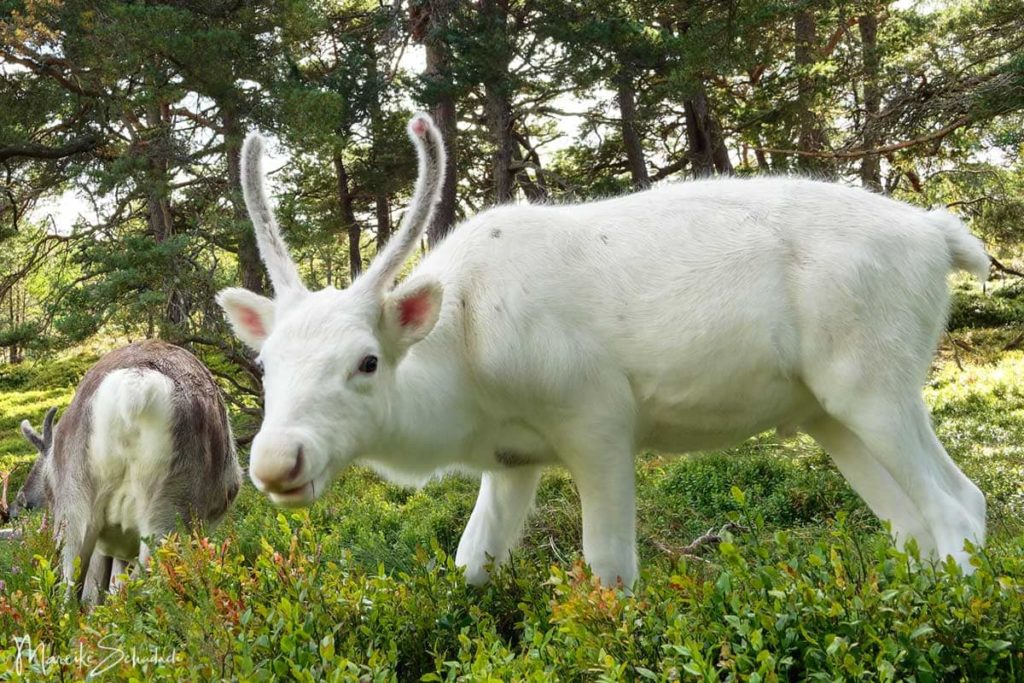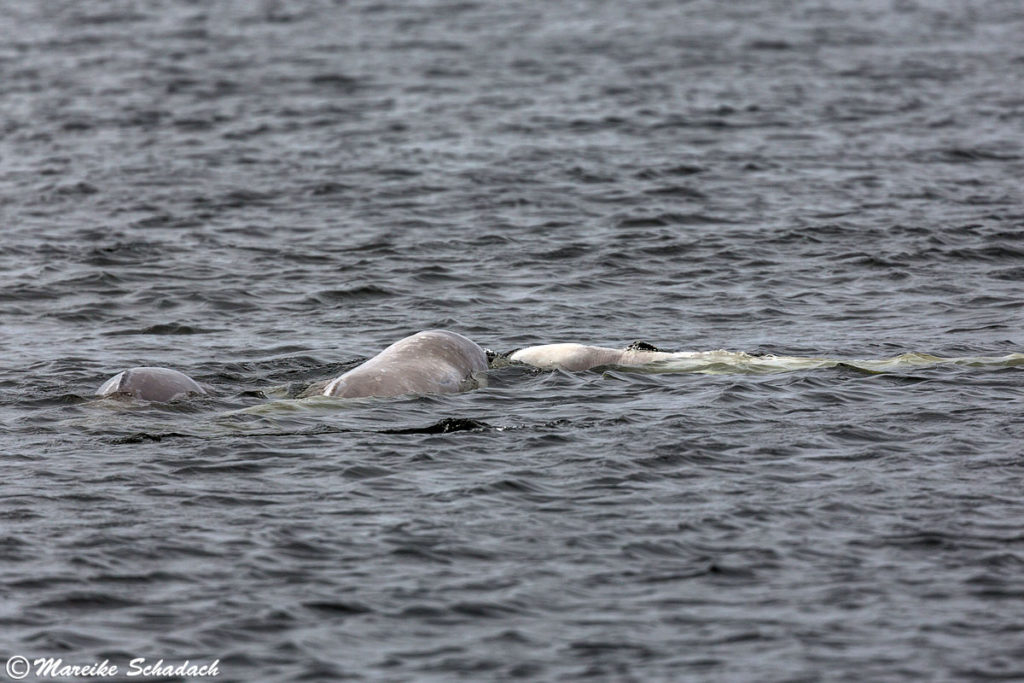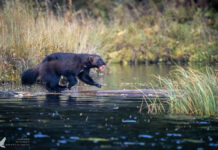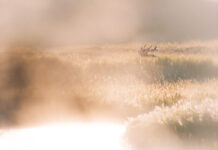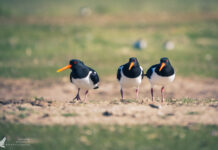Kenya. Do you want to see red elephants? In the national parks of Kenya you will always experience new surprises. This is also the case in Tsavo National Park, the largest and one of the oldest parks in the country. A special feature of the park are its red elephants. Here you can find out what the red elephants are all about and what else you can see in Tsavo National Park.
Unassigned, unpaid advertising. The article contains affiliate links.
With a total area of 21,812 km², Tsavo National Park is the largest of all national parks in Kenya. It is located in the southeast of the country and was established on April 1, 1948 . A year later it was divided into Tsavo West and the slightly larger Tsavo East. The border is formed by the Nairobi-Mombasa highway, which cuts through the park. Another border within the park is formed by the Galana River. All areas north of the river are not accessible for visitors.

Two parks with almost the same name but quite different appearances. But more about that later. Now first to the red elephants.
Why are the Elephants in Tsavo National Park red?
Many visitors come to Tsavo National Park to see the red elephants. The elephants are naturally as gray as all other elephants. The red color comes from the park's red soil, which is rich in iron oxide. The elephants love to cover themselves with the red soil in mud and dust baths. These baths help the elephants keep their skin cool and protect themselves from insects and parasites.

And best of all, the chances of you actually seeing the red elephants are extremely good. Because Tsavo is home to Kenya's largest elephant population, which is about one third of the total population.
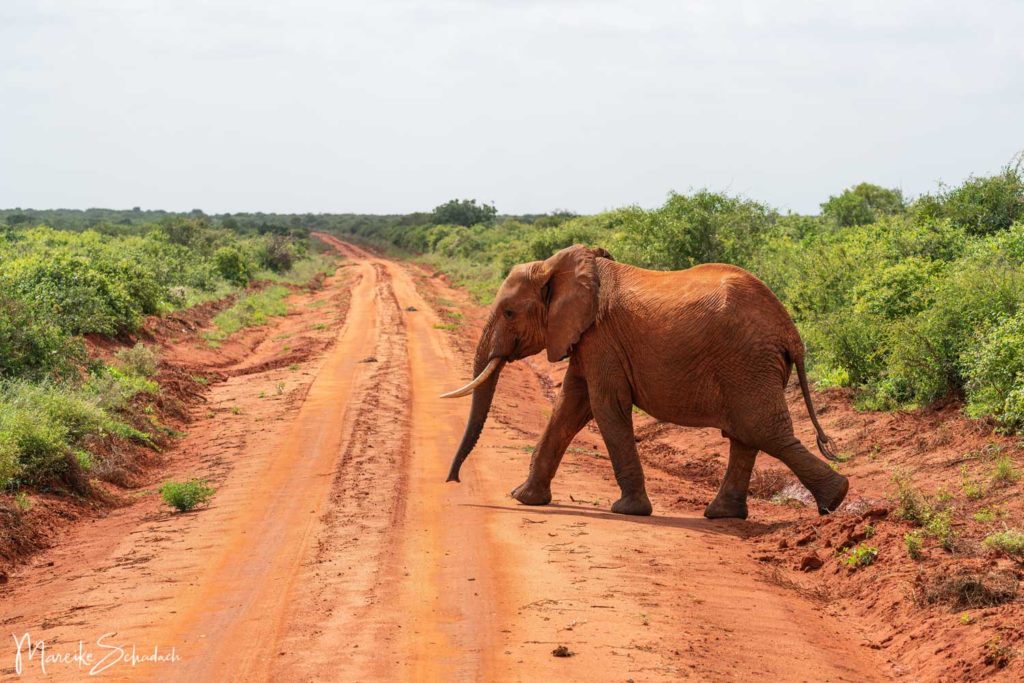

Wildlife in Tsavo National Park
The "Man-Eaters" of Tsavo
Tsavo National Park is not only known for its large elephant population, but also for its lions - the "man-eaters". It was in 1898 when two lions terrified the construction workers of the East African Railway for months. They came mostly at night and dragged the workers out of their tents. 135 people are said to have fallen victim to them before the lions were eventually shot and made into carpets. Today, the lions can be seen stuffed in the Chicago Field Museum. Based on bone samples, however, it is recently assumed that there were "only" about 35 victims.
Interesting: Male lions in Tsavo National Park have no or only very sparse manes. Nobody knows exactly why. But it is assumed that it is an adaptation to the hot climate.
You want to see more safari photos?
Then have a look at my photo website.
Here you come to the gallery “Big Five & Co”.
Impressive Biodiversity
Tsavo offers a breathtaking variety of landscape, nature and animals. With a little luck you can see all the "Big Five", elephants, rhinos, buffalos, lions and leopards. But besides the Big Five there are also many other animals. Typical species are those that are well adapted to dry savannah regions. These are for example giraffes, oryx antelopes, grant gazelles or giraffe gazelles. There are also zebras, lesser kudus, waterbucks, impalas, dik-diks, hippos, crocodiles, turtles and many other species. Monkeys are also represented with guenons and baboons. These like to hang around the lodges waiting for an opportunity to snatch something edible. Also the hyraxes like to linger at the lodges and are nice to watch.
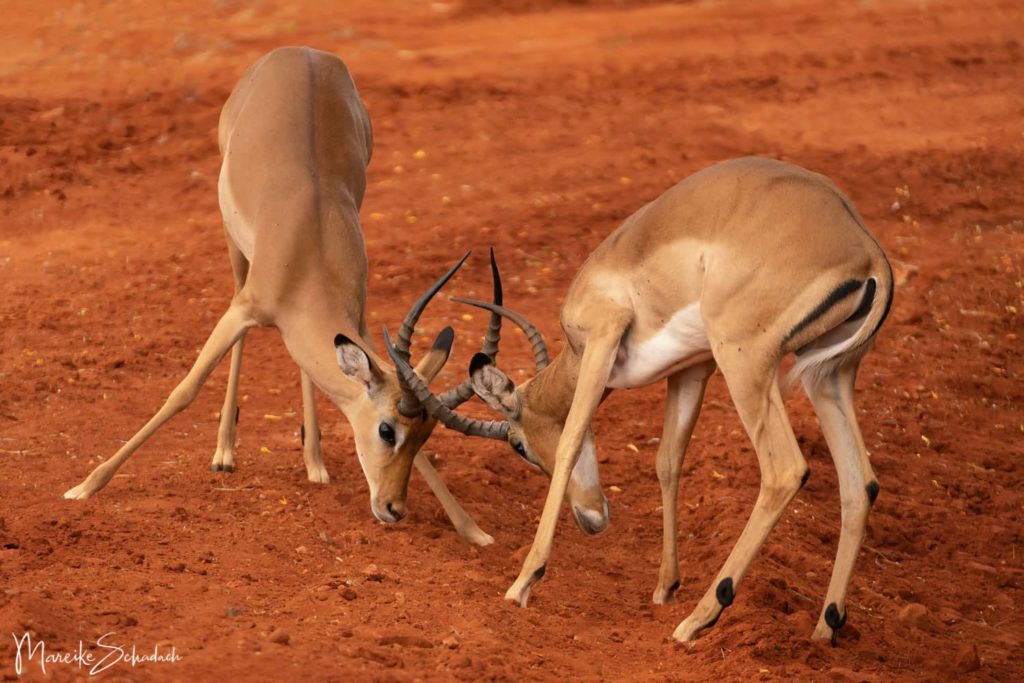
Tip: Tsavo is a birdwatching paradise, with some 600 species. Among them are ostriches, buzzards, kingfishers, hornbills, herons, skimmers, hawks, golden-breasted starlings and palm-nut vultures - to name just a few.
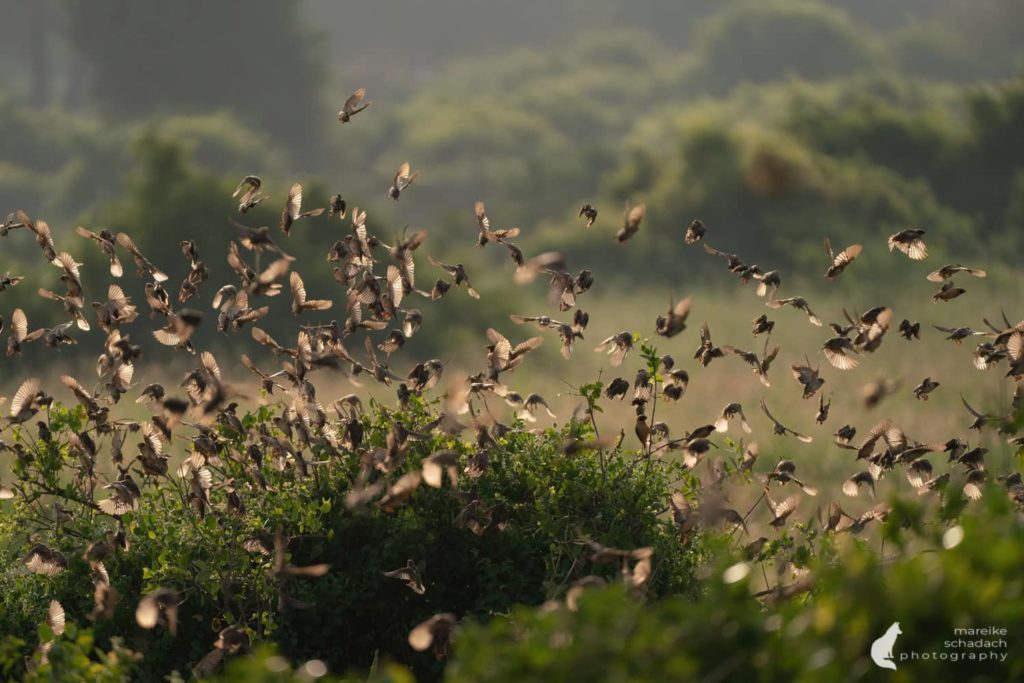
Poaching
In Tsavo National Park, too, poaching in the 1980s led to catastrophic population declines. For example, the elephant population declined from 40,000 animals in the 1970s to barely 5,000 in 1989 . During these years, the total population of elephants throughout Kenya shrank to a quarter. Only after a global ban on ivory trade went into effect in 1989 did populations slowly recover.
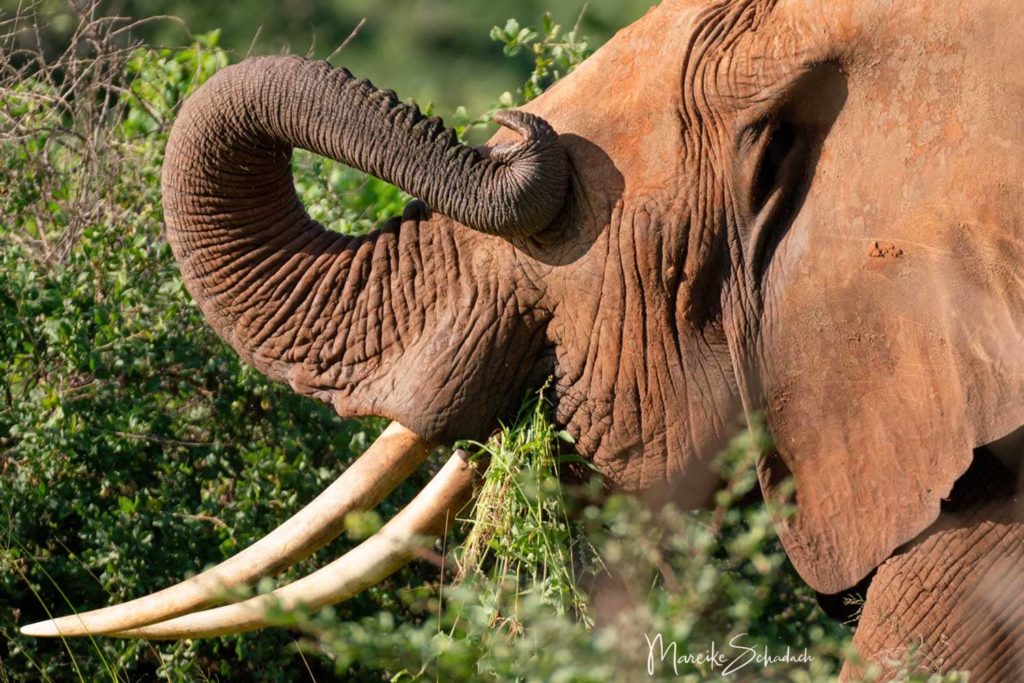
However, it was even worse for black rhinos. Between the 1970s and 1980s, 95% of the total population in Kenya was poached. By 1989, the species was nearly extinct.
Today, about 80 black rhinos live in the Ngulia Rhino Sanctuary , fenced off and closely guarded from poachers. The area is densely overgrown with bushes, so it is difficult to see the animals from the outside. Unfortunately, there is no possibility for visitors to visit the sanctuary.
Tsavo West and Tsavo East - what is the Difference?
Tsavo West National Park
Tsavo West National Park is scenically one of the most beautiful parks in Kenya. It encompasses a variety of different landscapes: Mountains and rocky ridges, the crystal clear Mzima Spring with narrow gallery forest, scrublands and acacia forests, as well as a solidified lava flow and extinct volcanic cones. On clear days there is also a fantastic view as far as Kilimanjaro.
In the morning, fog often hangs over the densely forested mountain tops. But the mountainous landscape and the dense vegetation also have a disadvantage: one discovers less animals. The best chance to see animals is when they are standing on the track. This is what the antelopes and also the zebras like to do, because there they feel halfway safe. This is due to the fact that even they can hardly see in the thicket if a predator is approaching. So you should bring some patience and not be disappointed if you don't see so many animals. But the great landscape more than makes up for it.

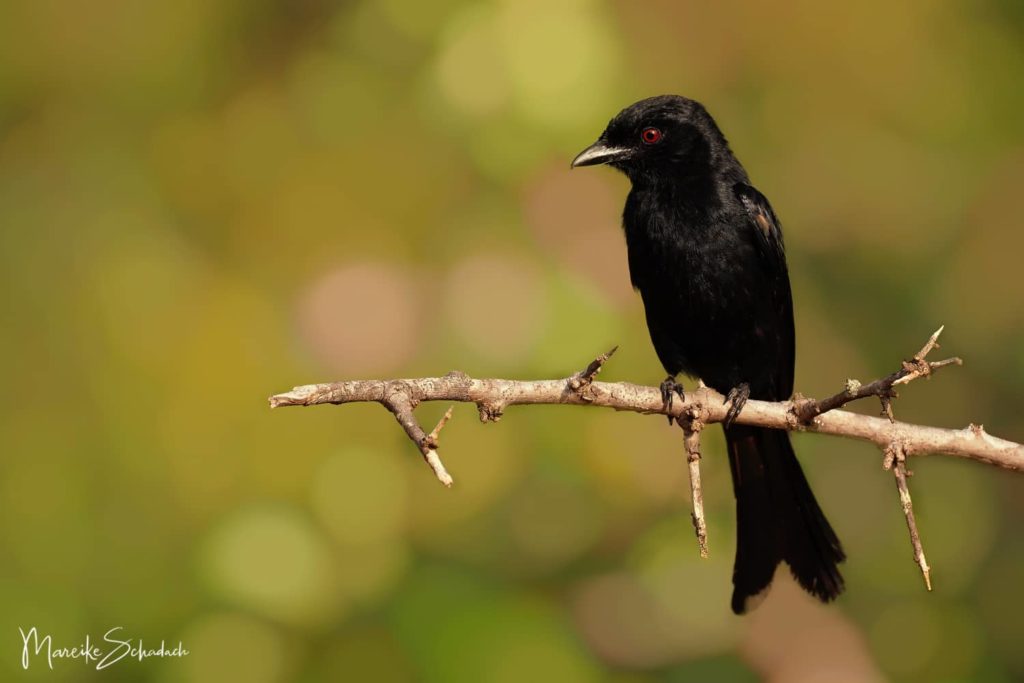
Leopard Feeding
There is a special highlight every evening around 7 pm at Ngulia Safari Lodge. For several years, a piece of meat has been laid out for a leopard at an established feeding station here. From the open balcony of the restaurant you have a good view. But honestly: I don't think much of such feedings. Nevertheless, I went to see it. However, I was quite creeped out when the leopard fixed me directly. He gnawed on the bone for a long time and still looked very hungry to me. What if he just jumped up on the balcony and wanted to eat more? When I shared my concern with our guide, he said that the leopard can't see through the bright lighting between the feeding area and the restaurant and therefore won't hunt through. That reassured me for the time being. But during the whole evening I kept an eye on the surroundings.
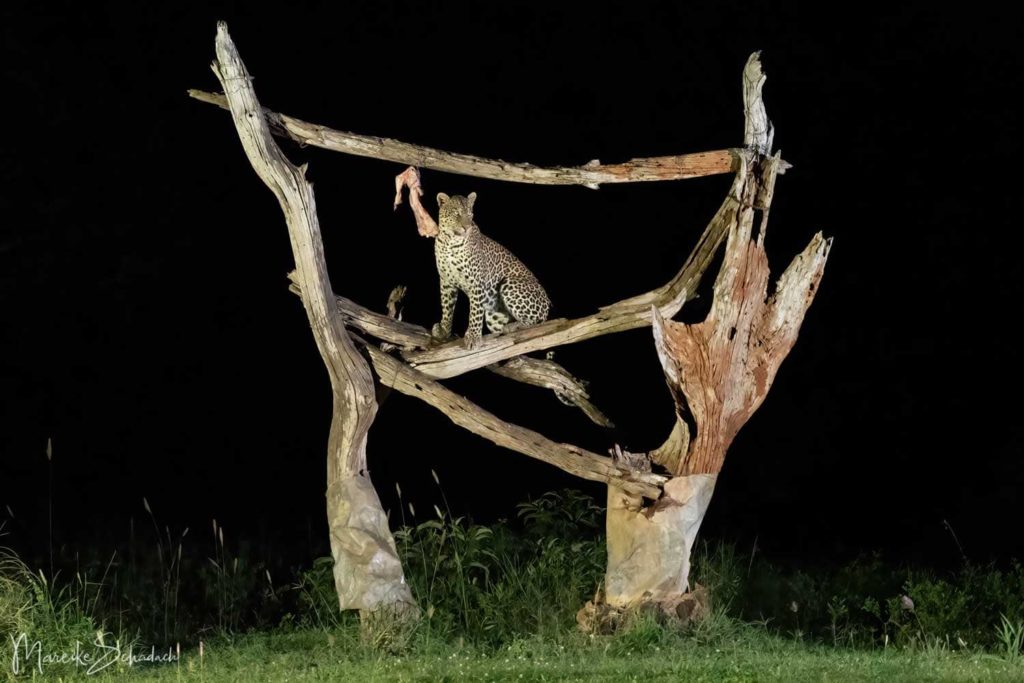
Mzima Springs
Another highlight of Tsavo West National Park is the Mzima Springs. This crystal clear spring is fed daily from the Chyulu Hills with 250 million liters of water underground.
Mzima is Kiswahili and means "life." There can hardly be a more appropriate name. After all, the spring attracts many wild animals. On a short guided tour you can observe crocodiles and hippos. From an underwater viewing platform you can see for yourself how clear the water is.
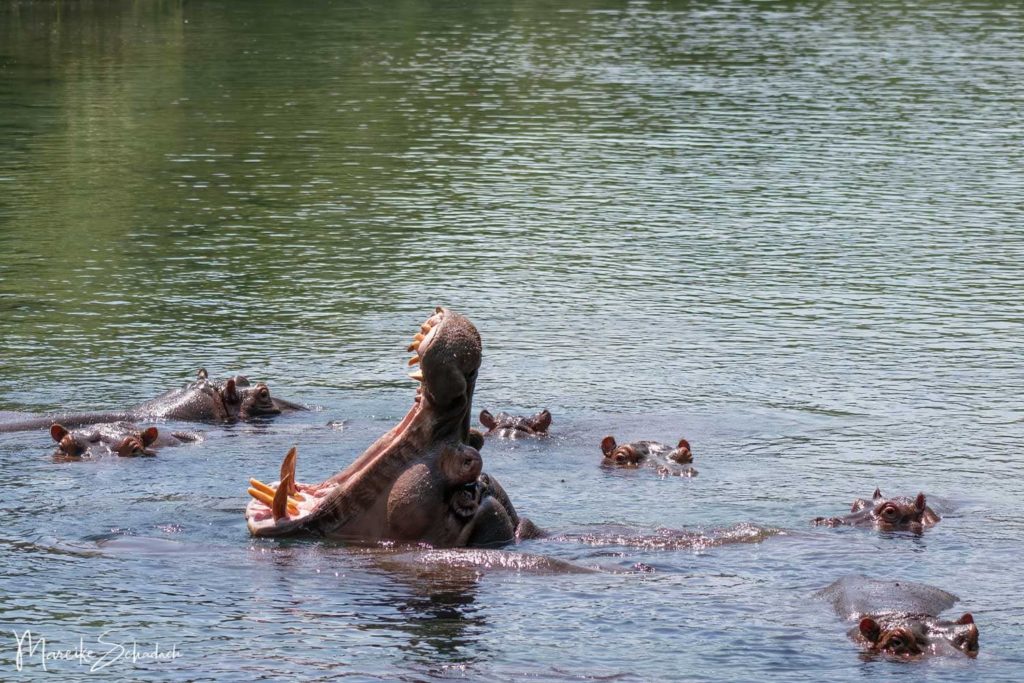
Shetani Lava Flow
Nicht weit von den Chyulu Hills wird die rot-grüne Landschaft plötzlich schwarz. Hier wird Tsavo West von einem spektakulären schwarzen Lavastrom durchzogen. Die letzte Eruption des Shetani war vor rund 200 Jahren. Heute bedeckt der Lavastrom eine Fläche von etwa 50 Quadratkilometern. Shetani ist Kiswahili und bedeutet “Teufel”. Denn als die Dorfbewohner sahen, wie brennende Lava aus der Erde hervorquoll, dachten sie, der Teufel kommt.

Tsavo East National Park
Tsavo East is Kenya's largest national park, covering 11,747 square kilometers. Running through the park is the Yatta Plateau, a lava field 300 kilometers long. It is the longest lava field in the world.
The park is wild and rugged, and impresses with excellent wildlife viewing opportunities. Here the landscape is much drier, flatter and not as dramatic as Tsavo West. The vegetation is dominated by open, thorny scrubland and semi-desert. This has the advantage that the animals are much easier to spot.
We were accommodated at Voi Safari Lodge and were therefore right on the border between the mountain and the plains. From the lodge we had a great view over the plain and on a few waterholes.
Tip for photographers: In the garden of Voi Safari Lodge you can take excellent pictures of lizards. And if you walk all the way down the stairs behind the pool, you will come to a photo hide right next to one of the waterholes.

The best Time to Visit
The park is open all year round and always accessible. Opening hours are 6:00 am to 6:00 pm. In designated areas you can even explore the park on foot accompanied by a Kenya Wildlife Service ranger.
Rainy season: October to January and March to May
Dry season: June to October and January to early March
If you prefer greener scenery, want the best views of Kilimanjaro, and also like bird watching, then you should go during the rainy season. However, if you prefer to see larger wildlife, then you should visit the park during the dry season. The animals are then easier to see when they venture to the rivers and waterholes. There is also a better chance of seeing animals at the waterholes set up by the lodges.

Tip: Tsavo National Park is very easy to reach from Mombasa and can therefore be perfectly combined with a beach holiday on the coast.
Book recommendations for Kenya
You want to know where the journey goes? Then I can recommend these books* about Kenya.
You can order the books at Amazon by clicking on the pictures. If you buy a product through one of these affiliate links, I get a small commission and you help me to keep filling Fernweh-Motive with interesting articles. The product will not be more expensive for you and you do me a huge favor.
Wart ihr schon mal im Tsavo Nationalpark und habt die roten Elefanten gesehen? Oder vielleicht sogar einen der “Menschenfresser”? Habt ihr noch Fragen oder Anregungen zu meinem Artikel? Wenn ja, dann schreibt mir doch einen Kommentar!
Do you want to know when there are new articles on my blog? Then follow me on Facebook, Pinterest or Instagram. I would also be very happy if you share my article with your friends.
Recommendations for further Reading
Do you love wildlife encounters as much as I do? Then you might also be interested in my articles about The Reindeer of the Cairngorms in Scotland or about the Beluga Whales of the Solowezki Islands.
